THINK ABOUTIT CRASH REPORT
Date: May 20, 1953
Sighting Time:
Day/Night: Night
Location: Kingman Arizona
Urban or Rural: Rural
Hynek Classification: CE-II (Close Encounter II) Observation of an object in close proximity to the witness, where physical traces (impression, burn, medical effect, etc.) are left or (electrical effect, heat) are felt
Duration:
No. of Object(s): Single
Size of Object(s):
Distance to Object(s):
Shape of Object(s): Disc
Color of Object(s):
Number of Witnesses:
Source: Raymond E. Fowler for Nicap, Anton Anfalov and Larissa Chora
Summary: “It has been published that a UFO crashed on the 20th May 1953 near the desert town of Kingman, Arizona. One witness signed an affidavit”.
Full Report
Depiction of the Kingman UFO. (credit: Michael Schratt)
“The case of the Kingman UFO retrieval was later brought to the public attention by Raymond Fowler, a respected UFO researcher, in June 1973. It involved an engineer who took preliminary measurements to assess the momentum of a crashing craft, measurements useful to any reverse engineering efforts. The engineer who brought this story to light was Arthur G. Stancil (previously known by the pseudonym “Fritz Werner“).
“Stancil graduated from Ohio University in 1949 and was first employed by Air Material Command at Wright-Patterson Air Force Base in Dayton, Ohio as a mechanical engineer on testing Air Force aircraft engines. Dr. Eric Wang who was suspected of leading a reverse engineering team on alien craft headed the Installations Division within the Office of Special Studies where Arthur worked”.
“The case of the Kingman UFO retrieval was then brought to the public attention by Raymond Fowler, a respected UFO researcher, in June 1973. It involved an engineer who took preliminary measurements to assess the momentum of a crashing craft, measurements useful to any reverse engineering efforts”.
“The engineer who brought this story to light was Arthur G. Stancil (previously known by the pseudonym “Fritz Werner”). Stancil graduated from Ohio University in 1949 and was first employed by Air Material Command at Wright-Patterson Air Force Base in Dayton, Ohio as a mechanical engineer on testing Air Force aircraft engines. Dr. Eric Wang who was suspected of leading a reverse engineering team on alien craft headed the Installations Division within the Office of Special Studies where Arthur worked.”
“Stancil signed a legal affidavit vouching to the honesty of his testimony, who has been was released by Ray Fowler in UFO Magazine, April 1976.
“Stancil told that he was loaned out to the Atomic Energy Commission and was designated as a project engineer on some atomic bomb tests referred to as “Operation Upshot Knothole”. The location of these tests was at Frenchman’s Flats at the southern end of the Nevada Test Site. The test director was a Dr. Ed Doll”.
ADDITIONAL INFORMATION:
Stancil worked for Raytheon in Sudbury, Massachusetts in the early seventies on avionics systems. It is unknown as to whether he had further involvement with alien technology, especially since it is likely that he worked for Dr. Wang at some point. Dr. Wang was an Austrian-born graduate of the Vienna Technical Institute, and close associate of Victor Schauberger who had according to the legend developed a concept of a flying disc and allegedly worked on the German flying disc program as early as 1941. Wang taught structural and metallurgical engineering at the University of Cincinnati from 1943 to 1952. Dr. Wang supposedly examined some of the recovered crashed discs and compared them to the vehicles tested in the alleged German V-7 program, but found the retrieved craft to be different in nature. In 1949, he became Director of the Department of Special Studies at Wright-Patterson where he worked long hours in cooperation with scientists from the Office of Naval Research and with Dr. Vannevar Bush and others from the “Research and Development Board.” Dr. Wang relocated his research from Wright-Patterson to Kirtland AFB in Albuquerque, New Mexico. Dr. Wang passed away on December 4, 1960.
Curiously, Leonard Stringfield, who re-opened the case for crash-retrievals, mentioned testimony he had gotten from a Naval Intelligence Officer who had seen bodies from a crash that occurred in the Arizona desert in 1953. He viewed the bodies at Wright-Patterson when the crates arrived at night aboard a DC-7. There were five crates in all, three of which contained little humanoids about four feet tall. Their heads were hairless and disproportionately large with skin that looked brown under the hangar lights. They were wearing tight-fitting dark suits. It has been suggested by some researchers that these bodies could have come from the crash mentioned by Stancil.
Engineer Bill Uhouse claims there was a crash of an Ebans (Ebens) aerial craft near Kingman, Arizona in 1953 and that four entities survived. That would have been six years after the more famous Roswell crashes and retrievals of “interplanetary craft of unknown origin.” In Kingman, according to Uhouse, two disabled Ebens and two more that were in good condition were retrieved by U. S.government units specially trained for retrieval missions.
The two non-humans in good condition were allowed to re-enter the craft and the disabled entities were taken to an unspecified medical facility. He also states that a recovery crew that entered the craft to inspect it came down with a mysterious sickness. The craft was then loaded aboard a trailer and hauled off to the Nevada Test Site north of Las Vegas.
Some implied that Ebans (Ebens) also were a class of EBEs with certain distinct physical characteristics and were said to be working with our military scientists and engineers on various projects. According to BJ, no language interface with the EBE existed in 1953, so a series of symbols were shown to test his reactions. Some symbols looked like letters and others were geometric shapes. The first symbol the EBEN pointed to looked like a “J.” The other was an “inertial-bar” that looked like a rod. So, humans called the Eben “J-Rod.”
COMMENTS:
A researcher adds:
“There were only two seats in the craft. As always there are more questions, but no one to question about these events unless someone else who was a participant steps forward with their testimony.”
Indeed Stancil was a participant and did step forward with an affidavit. The Vietnam commander who told the story in 1964 is an interesting lead. Of course, if additional witness stepped forward, the case would appear even more serious. There are indications of another Arizona UFO crash in 1953, April 18, from which the 3 bodies mentioned in Springfield’s story might have come.
A researcher adds:
“Strange as it seems it was during the 1950s that various aircraft companies started research projects on the control of gravity and electro-gravitational propulsion. It is possible that these projects constituted some of the first reverse engineering projects on extraterrestrial propulsion systems.”
But we have seen no positive results. Of course Air Intelligence had to try reverse engineering, and maybe promoted such research projects, but it was bound to fail: to understand such advanced flying machine would require a full understanding of the physics, and technology to manufacture the parts. If you had provided the Space Shuttle to Orville and Wilbur Wright, they would have learned nothing useful from it. Unless… you would have explained the physics and provided the technology also. Something to think about.
“Fritz Werner’s” Kingman Crash
Below is an account of an alleged flying saucer crash in Arizona reported in Casebook of a UFO Investigator by Raymond Fowler (Prentice-Hall, 1981, page 199-203)
In 1973 I came even closer to documenting the reality of crashed UFOs, with a signed affidavit from an alleged member of the USAF investigating team! He must remain anonymous; I’ve dubbed him Fritz Werner.
I, Fritz Werner, do solemnly swear that during a special assignment with the U.S. Air Force, on May 21, 1953, I assisted in the investigation of a crashed unknown object in the vicinity of Kingman, Arizona.
The object was constructed of an unfamiliar metal which resembled brushed aluminum. It had impacted twenty inches into the sand without any sign of structural damage. It was oval and about 30 feet in diameter. An entranceway hatch had been vertically lowered and opened. It was about 3-1/2 feet high and 1-1/2 feet wide. I was able to talk briefly with someone on the team who did look inside only briefly. He saw two swivel seats, an oval cabin, and a lot of instruments and displays.
A tent pitched near the object sheltered the dead remains of the only occupant of the craft. It was about 4 feet tall, dark brown complexion and had 2 eyes, 2 nostrils, 2 ears, and a small round mouth. It was clothed in a silvery, metallic suit and wore a skull cap of the same type material. It wore no face covering or helmet.
I certify that the above statement is true by affixing my signature to this document this day of June 7, 1973.
Signature: Fritz Werner
Date Signed: June 7, 1973
Witnessed By: Raymond E. Fowler
Date Signed: June 7,1973
I watched as Mr. Werner carefully read and signed the final piece of documentation to a 65-page report I had prepared for NICAP. My attempts to substantiate Fritz Werner’s incredible story had put me in contact with the AEC, Stanford Research Institute, Wright- Patterson AFB, former Project Bluebook personnel, and a number of persons within the military-industrial complex. Although no additional witnesses could be found, the peripheral names, positions, tests, dates, and places mentioned within Mr. Werner’s personal account all check out exceptionally well.
Mr. Werner had kept his bizarre experience a closely guarded secret for almost exactly twenty years. If true, his story indicates that the physical recovery of manned UFOs had been kept secret for over two decades.
Between June 1949 and January 1960 Fritz held several engineering and management positions at Wright-Patterson AFB near Dayton, Ohio. During the period in which the incident took place, he worked within what was known as the Air Material Command Installations Division, within the Office of Special Studies headed by Dr. Eric Wang. His special ties at that particular time included the engineering design of Air Force engine test cells, development techniques for determining blast effects on buildings and structures, and the designing of aircraft landing gear. Fritz worked his way up to become chief of alighting devices within the aircraft laboratory, Wright Air Development Center; which position led him up to management positions at Wright-Patterson, and later at a variety of civilian companies involved with defense contracts. At the time of his reported experience, he was on special assignment to the AEC at the atomic proving ground in Nevada.
I was project engineer on an Air Force contract with the Atomic Energy Commission for “Operation Upshot-Knothole.” My job involved the measuring of blast effects on various types of buildings especially erected for the tests.
On May 20, 1953, I worked most of the day at Frenchman Flat. In the evening, I received a phone call from the test director, Dr. Ed Doll, informing me that I was to go on a special job the next day. On the following day, around 4:30 P.M., I reported for special duty and was driven to Indian Springs Air Force Base near the proving ground where I joined about fifteen other specialists.
We were told to leave all valuables in the custody of the military police. I gave them my wallet, watch, pen and other things I don’t remember. We were then put on a military airplane and flown to Phoenix. We were not allowed to fraternize.
There, we were put on a bus with other personnel who were already there. The bus windows were all blacked out, so that we couldn’t see where we were going. We rode for an estimated four hours. I think we were in the area of Kingman, Arizona, which is northwest of Phoenix and not too far from the Atomic Proving Ground in Nevada. During the bus tnp, we were told by an Air Force full- Colonel, that a super-secret Air Force Vehicle had crashed and that since we were all specialists in certain fields, we were to investigate the crash in terms of our own specialty and nothing more.
Finally, the bus stopped and we disembarked one at a time as our names were called, and escorted by military police to the area that we were to inspect. Two spotlights were centered on the crashed object, which was ringed with guards. The lights were so bright that it was impossible to see the surrounding area. The object was oval and looked like two deep saucers, one inverted upon the other. It was about thirty feet in diameter with convex surfaces, top and bottom. These surfaces were about twenty feet in diameter. Part of the object had sunk into the ground. It was constructed of a dull silver metal like brushed aluminum. The metal was darker where the saucer “lips” formed a rim, around which were what looked like slots. A curved open hatch door was located on the leading end and was vertically lowered. There was a light coming from inside, but it could have been installed by the Air Force.
My particular job was to determine from the angle and the depth of impact into the sand, how fast the vehicle’s forward and vertical velocities were at the time of impact. The impact had forced the vehicle approximately twenty inches into the sand. There were no landing gear. There also were no marks or dents, that I can remember, on the surface–not even scratches. Questions asked, having nothing to do with our own special areas, were not answered.
An armed military policeman guarded a tent pitched nearby. I managed to glance inside at one point and saw the dead body of a four foot human-like creature in a silver metallic-looking suit. The skin on its face was dark brown. This may have been caused by exposure to our atmosphere. It had a metallic skullcap device on its head.
As soon as each person finished his task, he was interviewed over a tape recorder and escorted back to the bus. On the way, I managed to talk briefly with someone else who told me that he had glanced inside the object and saw two swivel-like seats as well as instruments and displays. An airman, noticing us talking together, separated us and warned us not to talk with each other.
After we all returned to the bus, the Air Force Colonel in charge had us raise our right hands and take an oath not to reveal what we had experienced. I was instructed to write my report in longhand and not to type or reproduce it. A telephone number was given me to call when the report was complete. I called the number and an airman picked up the report. I had never met nor talked with any of the investigating party. They were not known to me, although I think I recognized two officers’ faces. One was from Griffiss Air Force Base at Rome, New York, and the other was involved with an Air Force Special Weapons Group based at Albuquerque. I later saw and recognized the Colonel-in-charge in a movie concerning Project Bluebook.
Mr. Werner confided that a year after his experience he was assigned to serve Bluebook as a official consultant. He sympathized with the Air Force’s secret handling of the UFO problem: It did not have an answer regarding where UFOs originated. He felt that they probably still don’t know. He said, however, that the Air Force did believe that UFOs were interplanetary vehicles and did not want to create national panic. In response to my questions relating to UFO propulsion systems, he said:
Well, we all had our guesses as to what it was. At the time, I happened to have contact with a professor in Germany from a very famous university. The Air Force had a contract with them to study antigravity. We didn’t call it that exactly, but that’s what the popular term was in which you would use the earth’s magnetic fields as a form of propulsion. They were able to–with a lot of power, by the way–produce an antigravity machine. It was very impractical and as far as I know, still is impractical, but someday it will be perfected.
Fritz Werner’s credentials are impressive. I checked out his professional resume by calling former employers during a careful character check. Neither of the two former Bluebook officials that I talked with would confirm the incident. One asked, “Where is the object now?” The other got very nervous when I mentioned Dr. Eric Wang’s Office of Special Studies. He asked me to leave him alone, as he wanted to live out his life in privacy.
The AEC in Washington and in Nevada both confirmed the dates and names of the tests that Fritz mentioned. They also confirmed the name of the test director, Dr. Ed Doll, and the chief of the Office of Special Studies as the technical and scientific monitor for the project. Further investigation revealed that Dr. Wang had died. I did manage to track Dr. Doll to Stanford Research Institute, but their personnel department did not know his whereabouts. They felt he had died.
Through correspondence with the Mohave County historian I found that Kingman was an unlikely place for the incident to have occurred. A four-hour drive at night in a bus with blacked-out windows could have conveyed the investigating team to any number of places. The historian felt that the vast range controlled by Luke AFB, southwest of Phoenix, was a more likely spot for the crash site. He stated that it is a real desert area with packed sand just as Fritz Werner described.
There were some inconsistencies associated with Fritz’s story, but most appeared to be memory lapses. Former employers and professional acquaintances held Mr. Warner in high esteem. Everyone described him as a highly competent, technical, and moral individual. I found that he holds two bachelor’s degrees, in mathematics and physics, and a master’s degree m engineering. He is also a member of a number of professional organizations such as the American Association for the Advancement of Science, and is involved in a variety of civic groups. The only out-of-the ordinary activities in his personal record are a keen interest in parapsychology, and past involvement–with other professional people–in psychic experiments. In my final report, I discussed the possible explanations of his account. There seemed to be no motive for a hoax, and no apparent evidence for a psychosis. His associates felt strongly that he was not the type to perpetrate practical jokes.
To pin down the exact date of the crash, Fritz mentioned that he may have written something in his diary at that time. After a search, he found the penciled diary that he kept meticulously in those days. When I examined its pages, there was no doubt as to its authenticity. The obviously aged page for May 20, 1953, read:
Spent most of the day on Frenchman’s Flat surveying cubicles and supervising welding of plate girder bridge sensor which cracked after last shot. Drank brew in eve. Read. Got funny call from Dr. Doll about 1000. I’m to go on a special job tomorrow.
My eyes then skipped over to the entry on May 21.
Up at 7:00. Worked most of day on Frenchman with cubicles. Letter from Bet. She’s feeling better now–thank goodness. Got picked up at Indian Springs AFB for a job I can’t write or talk about. [italics mine]
Tantalizing as the Werner story might be, we still have no proof that such incidents have occurred. (How many would believe the government were it to state that studies had been made of crashed UFO vehicles and occupants? Some still believe our manned trips to the moon were simulated in Hollywood studios.)
Note: The book appears to contain no other references to Fritz Werner or the Kingman Crash.
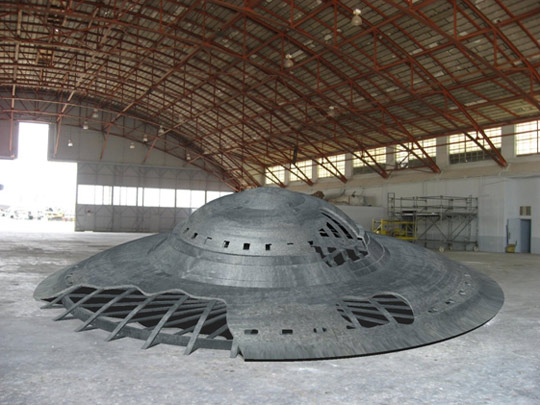
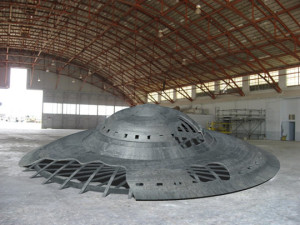
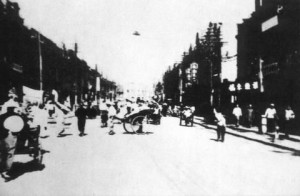
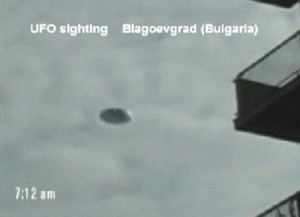
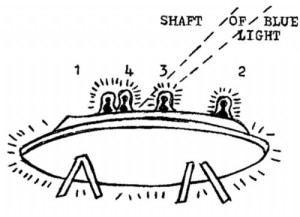
Related Reports
Arizona Map of all Sightings
4,000 Year Old UFO Found in Grand Canyon – Article
1948: Dreamy Draw area, Arizona, UFO Crash